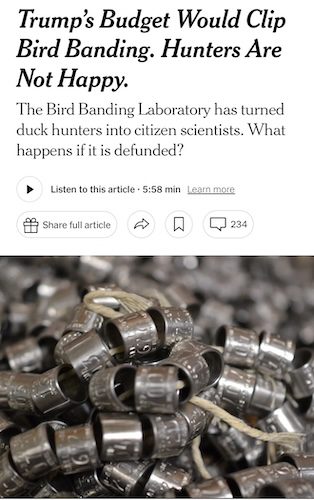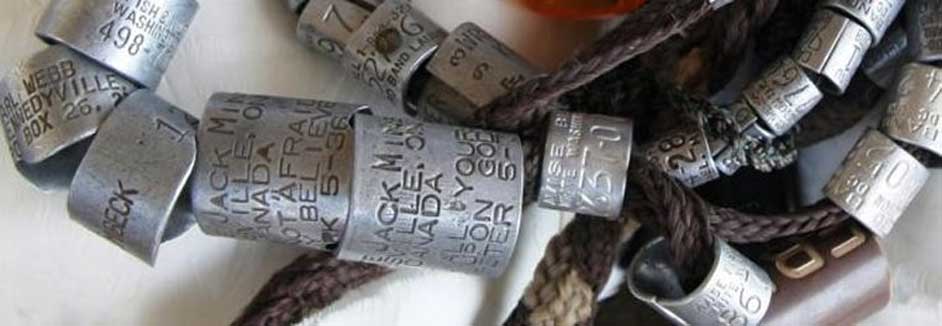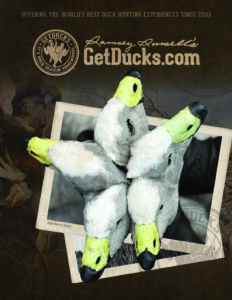Budget Would Clip Bird Banding. Hunters Not Happy.
 For more than a century, the Bird Banding Laboratory has placed small metallic bands on the legs of birds across North America. Each year, the lab receives thousands of reports from bird watchers and biologists who spot the markers on the birds and report them to the lab. In this way, the lab tracks and monitors the movements and numbers of birds, from sparrows to sparrow hawks.
For more than a century, the Bird Banding Laboratory has placed small metallic bands on the legs of birds across North America. Each year, the lab receives thousands of reports from bird watchers and biologists who spot the markers on the birds and report them to the lab. In this way, the lab tracks and monitors the movements and numbers of birds, from sparrows to sparrow hawks.
At a moment when bird populations are declining globally, bird banding is essential for conserving species and tracking population changes over time. It is also integral in setting regulations and limits for waterfowl hunting. Indeed, no group reports more bird bands — or prizes them more — than hunters.
The trophy may not last. The lab falls under the U. S. Geological Survey’s Ecosystem Mission Area, the agency’s major ecology program, which under President Trump’s 2026 proposed budget would see funding reduced to $29 million, from $293 million. Many hunters are unhappy at the prospect.
Each band reported by hunters is essential for detecting changes in waterfowl populations and for setting hunting regulations. In its contribution to waterfowl management, the Bird Banding Laboratory “has given us something that is the envy of the world,” Ramsey Russell, a duck hunter in Mississippi, said.
Many birds migrate between Canada and South America every year. To coordinate all of the data, the Bird Banding Laboratory works with the Bird Banding Office in Canada — which could be crippled if the American lab is defunded, said Chris Nicolai, a waterfowl scientist at Delta Waterfowl, a duck conservation nonprofit.
Dr. Nicolai noted that a significant portion of band data is collected, for free, by hunters, who also buy duck stamps to legally hunt waterfowl. The stamps, in turn, support habitat conservation.
Read Full NYT Article: Trump’s Budget Would Clip Bird Banding. Hunters Are Not Happy. The Bird Banding Laboratory has turned duck hunters into citizen scientists. What happens if it is defunded?







